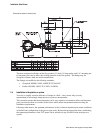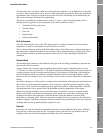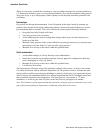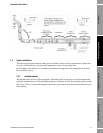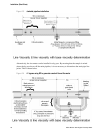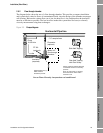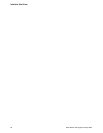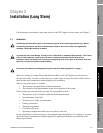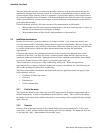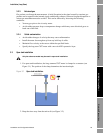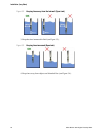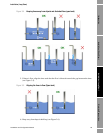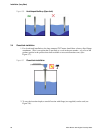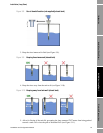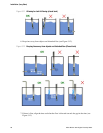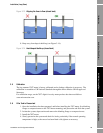22 Micro Motion 7827 Digital Viscosity Meter
Installation (Long Stem)
The term achievable accuracy can be used to describe a measure of the product quality that can be
realistically obtained from a process system. It is a function of measurement accuracy, stability and
system response. High accuracy alone is no guarantee of good product quality if the response time of
the system is measured in tens of minutes, or if the measurement bears little relevance to the operation
of the system. Similarly, systems which require constant calibration and maintenance cannot achieve
good achievable accuracy.
Factors which may adversely affect the relevance of the measurements could include:
• Measurement used for control purposes being made too far away from the point of control, so
that the system cannot respond properly to changes.
• Measurements made on fluid which is unrepresentative of the main flow.
3.2 Installation considerations
Density and viscosity is a sensitive indicator of change in a fluid - a key reason why density and
viscosity measurement is increasingly being chosen as a process measurement. However, density and
viscosity measurements can be sensitive to extraneous effects and, therefore, great care must be taken
to consider all the factors which may affect measurement when assessing the installation
requirements.
Like many other meters, the optimum performance of the viscosity meter depends upon certain
conditions of the fluid. You must first select a suitable position where the fork’s tines are always
completely immersed in the fluid. Although tolerant of solids, turbulence and bubbles, there should
be at least a 50 mm clearance from objects e.g. impellers, pipe stubs, etc.
Then consideration can be given to fluid conditioning at that point. Where the application
requirements allow a degree of tolerance in the point chosen for installation, the installation may be
able to take advantage of natural flow conditioning.
The choice of mechanical installation will be dictated partly by application needs and partly by the
fluid conditions, such as:
• Condition of fluid at the sensor.
• Flow rate.
•Entrained gas.
• Solids contamination.
3.2.1 Fluid at the sensor
The fluid in the effective zone of the long stem 7827 meter must be of uniform composition and at
uniform temperature. It must be representative of the fluid as a whole. This is achieved by taking
advantage of any natural tank condition that tends to cause mixing, such as pump discharge, partially
open valves etc.
3.2.2 Flow rate
If there is flow in the tank, the rate of flow should ideally be not more than 0.5 m
3
/s. If flow rates
exceed this, a ‘shift’ will be introduced into density and viscosity readings. The higher the flow rate
is, the larger the ‘shift’. Measurements also become ‘noisy’.



